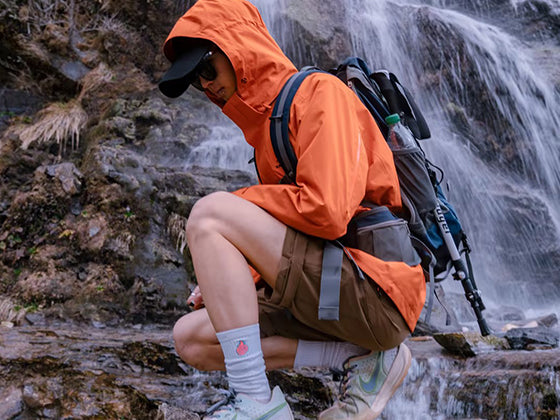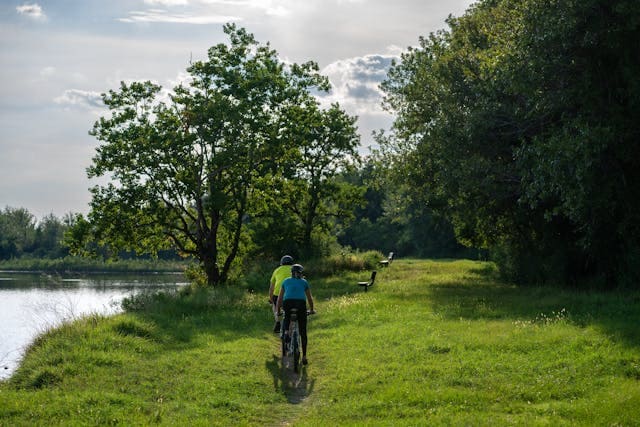Nella ciclismo quotidiano, spesso soffriamo di infortuni alle articolazioni del ginocchio a causa di una postura scorretta o di un'altezza del cuscino del sedile troppo bassa. Le ginocchia sono fondamentali per gli appassionati di ciclismo, poiché un ginocchio sano può proteggerti dal dolore. Il metodo di guida corretto non danneggerà l'articolazione del ginocchio, quindi mantenere la postura corretta durante la pedalata e regolare il cuscino del sedile per adattarlo alla tua altezza e angolo è molto utile per proteggere il ginocchio.
Innanzitutto, la cosa più importante per proteggere il ginocchio è la "prevenzione": in generale, le lesioni dell'articolazione del ginocchio sono per lo più causate da danni a tessuti come la cartilagine e il menisco che non si rigenerano facilmente. Questi tessuti non possono recuperare o crescere rapidamente come i muscoli. Se vuoi promuovere il recupero della cartilagine o del menisco, puoi assumere quantità appropriate di Glucosamina Solfato, ma non dovrebbe essere assunta in eccesso.
I tessuti come la cartilagine e il menisco sono considerati non rinnovabili per diversi anni o addirittura di più, quindi eseguire esercizi muscolari mirati può essere utile per la riabilitazione e il mantenimento dei tessuti dell'articolazione del ginocchio. Tuttavia, molte persone che amano andare in bicicletta e spesso trasportano grandi borse di bagagli soffrono di problemi al ginocchio a causa del ciclismo ad alta intensità, dei carichi pesanti e di una postura di guida scorretta, portando infine alla radice della loro malattia. Come possiamo proteggere i nostri fragili ginocchi durante il ciclismo a lunga distanza? Si prega di leggere attentamente i seguenti quattro consigli.

1. Mantenere la corretta postura di guida
Se si utilizza una frequenza di pedalata elevata, la forza sul ginocchio sarà ridotta durante ogni pedalata, proteggendo efficacemente l'articolazione del ginocchio. Alcuni amici si affidano alla loro buona forza fisica e fanno del loro meglio per pedalare in salita per mostrare una velocità maggiore. Tuttavia, la forza dell'articolazione del ginocchio è limitata, e non è sorprendente che una pedalata ad alta intensità a lungo termine possa causare danni all'articolazione del ginocchio. Quindi, le persone con gravi danni all'articolazione del ginocchio sono generalmente quelle con una migliore forza fisica.
2. Regolare il cuscino del sedile all'altezza appropriata
"Più le tue ginocchia si piegano mentre pedali, maggiore è la pressione. Tuttavia, per motivi di sicurezza, la maggior parte delle persone regola il sedile della propria bicicletta molto in basso in modo da potersi sostenere con i piedi in caso di problemi. Tuttavia, la postura di guida bassa causa direttamente una enorme pressione sulle ginocchia. Si può dire che se questa postura di guida viene mantenuta costantemente, presto si verificheranno problemi alle articolazioni del ginocchio. L'altezza corretta del cuscino del sedile è: quando pedali e premi il pedale fino in fondo con la gamba, la tua gamba è quasi dritta, ma c'è ancora una leggera piega per facilitare la rotazione."
3. Quando si cammina, il ginocchio dovrebbe muoversi verticalmente su un piano orizzontale.
Il movimento del ginocchio non è semplicemente un movimento piatto come una cerniera, ma una leggera rotazione all'interno di un certo range di movimento. Ad esempio, quando si pedala in bicicletta, si può prestare attenzione alle ossa del ginocchio. Se si muovono verticalmente su e giù senza tremare avanti e indietro, la pressione sul ginocchio è minima. Tuttavia, se le ossa del ginocchio si muovono a forma di 8 o a forma di S (vista di lato), ciò può causare infortuni al ginocchio.
4. Fai più esercizi per i muscoli delle gambe
Esercitare muscoli morbidi e forti richiede di fare più esercizi per i muscoli delle gambe e di minimizzare il più possibile la capacità di carico del ginocchio. Per prevenire infortuni sportivi all'articolazione del ginocchio, puoi dedicare tre o quattro giorni a settimana allo stretching e all'allenamento con i pesi, che possono esercitare efficacemente i muscoli quadricipiti (parte anteriore della coscia) e i bicipiti (parte posteriore della coscia). Se la coscia è forte, anche il ginocchio sarà più forte e meno soggetto a infortuni.
Rinforzare consapevolmente l'esercizio dei quadricipiti e del legamento crociato, potenziare la forza dei quadricipiti interni e dei muscoli della coscia (come gli squat con carico), e combinare metodi come lo stretching muscolare, la camminata, l'equitazione o esercizi di abbraccio al muro per preparare la strada a un movimento fluido della rotula nel solco femorale.
I muscoli sono come elastici, se sono molto elastici, non si romperanno indipendentemente da quanto li tiri; se sono rigidi, potrebbero rompersi con un solo tiro. Più alta è la temperatura, più i muscoli saranno morbidi, rendendoli più suscettibili a essere allungati. Pertanto, quando si pedala, è importante rimanere caldi, altrimenti l'aria fredda renderà i muscoli rigidi, il che può facilmente causare infortuni. Nella vita quotidiana, possiamo strofinare il bordo inferiore del ginocchio con entrambe le mani e le dita per promuovere il mantenimento del ginocchio con "lubrificante".

L'arrampicata mette anche un carico significativo sulle ginocchia.
Dobbiamo raddoppiare i nostri sforzi per prevenire che si verifichino problemi simili durante il ciclismo. Se si causano danni permanenti al ginocchio a causa di abitudini di guida o postura errate, ce ne pentiremo. Pertanto, per evitare tali problemi, si prega di ricordare i quattro consigli sopra.









